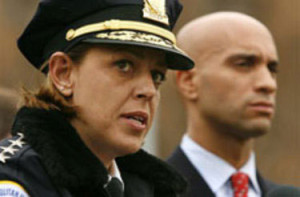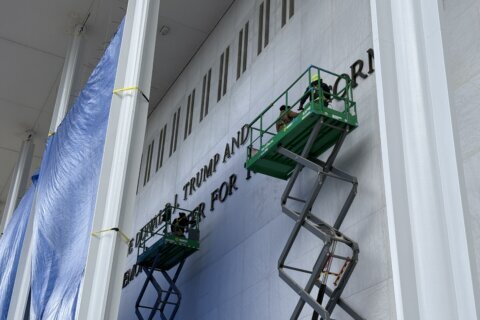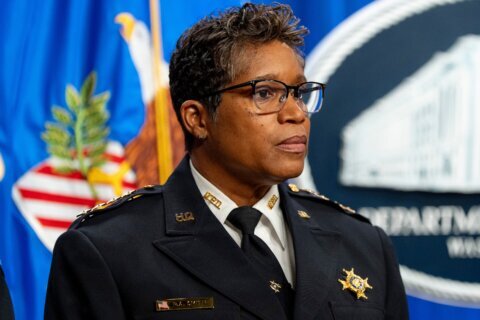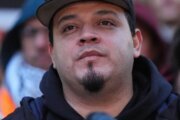Gary Emerling, wtop.com
Editor’s Note: The 2008 fatal shooting of 13-year-old Alonzo Robinson in the Trinidad neighborhood of D.C. helped spark the second incarnation of the Metropolitan Police Department’s now dormant Neighborhood Safety Zones initiative and focused attention on the violence taking place in the city’s Northeast quadrant.
Now, nearly three years later, a trial for the young men accused in the events surrounding the teenager’s death is about to begin. In a three-part series, WTOP takes a look at the night of Robinson’s death, the response by city police and the subsequent search for justice.
—————-
Part II: The failure of crime control
WASHINGTON – Alonzo Robinson was pronounced dead in the early morning hours of July 19, 2008.

He had been shot in the back, police said.
Twelve spent 9 mm shell casings were found at the scene.
Alonzo’s mother, Marcella, learned her son had been killed after she was taken to the hospital for her own gunshot wound. The bullet pierced and exited her forearm, leaving a scar.
“It’s awful,” Marcella said. “Just being with him for 13 years, he’s the only thing I ever really had.”
Meanwhile, news of the fatal shooting reached D.C. city hall, where the mayor just a month earlier had decided to take drastic measures to stop violence in the neighborhood.
***
Former Mayor Adrian M. Fenty’s police checkpoints were the brainchild of two of his top advisers — former Attorney General Peter Nickles and Metropolitan Police Chief Cathy Lanier.
Lanier’s penchant for testing out novel crime-fighting approaches, coupled with Nickles’ brash assertion of authority, created the perfect power couple for Fenty to turn to when confronted with what was seen as a wave of violent crime besieging the District’s Northeast neighborhoods in 2008.
From January through April, there had been 17 homicides in the city’s Ward 5, of which Trinidad makes up a small part. The number was a 112 percent increase compared to the same time in 2007, and nine homicides were committed within the ward during April alone.
According to the Washington Post, Fenty held a meeting with Nickles and Lanier on how to stop the bloodshed. When asked, Nickles and Lanier differed on whether such a meeting was held and whether Fenty directed them to come up with a plan.
Nickles said the meeting referred to by the Post likely was a CapStat session — one of a series of accountability roundtables held by the mayor and his city administrator to go over a city agency’s performance. Lanier said the eventual program implemented was never discussed at a CapStat meeting, and she couldn’t “recall the mayor directing us to develop anything” in response to the violence.
City records show that a CapStat session was held April 1, 2008, to examine the progress of Fenty’s Focused Improvement Areas initiative – a program aimed at curtailing crime in troubled neighborhoods by combining law enforcement with support from human service agencies and community-based organizations. At that meeting, police officials were directed to identify three new FIAs for the program’s expansion by April 11.
By a follow-up session on May 1, records show that Trinidad — where Alonzo Robinson would be gunned down more than two months later — had been selected as an improvement area. An action item from the session said police also were to hold another meeting by May 9 “to generate ideas to engage the community to reduce crew violence.”
A source who says he was present at a CapStat session held around that time said city officials began to focus on Trinidad because it was known to have a number of “beefs” occurring between neighborhood crews.
The source also said Nickles began to opine about the possibility of stemming the violence by rounding up those usually responsible for the trouble and keeping them from entering the neighborhood. At the time, the attorney general’s comments came off as rather “bizarre,” the source said.
“If you could just stop them from coming in, you could sort of eradicate the problem,” the source recalled as the substance of Nickles’ argument.
Fenty apparently liked what he had heard and asked for an idea along the lines of Nickles’ reasoning. Everything was on the table, according to Nickles’ recollection.
The mayor said “‘We need to think differently, out of the box, creatively,'” Nickles remembered. “He may have said, ‘Peter, why don’t you get together with Lanier and see what we can come up with.'”
Roughly a month later at a June 4 news conference, Fenty stood in front of a Trinidad recreation center under the glaring sun.
Flanked by Lanier and Nickles, the mayor declared that “the normal laws and ways of doing things” just weren’t working anymore.
***
On June 6, 2008 – two days after the news conference and a week after a horrific triple murder at a BP gas station in the area — Lanier gave approval for the first Neighborhood Safety Zone to be implemented in Trinidad.
MPD operated the police checkpoints near the 1400 block of Montello Avenue on 11 occasions between June 7 and June 12, allowing 903 vehicles to pass through and turning away 48. One arrest was made for a DUI-related offense.
Officers manning the checkpoints barred anyone without a “legitimate” reason from driving into the zone. Valid reasons for allowing entry included that drivers lived in the area, were making a delivery or were going to church.
Roughly a month later, Alonzo Robinson’s lifeless body lay at Children’s National Medical Center in Northwest. His mother, Marcella, wept in her bed at The George Washington University Hospital.
At least five other people had been shot during the early morning hours of July 19 in the Trinidad area. One man reportedly had been stabbed in the neck.
By that time, the MPD checkpoints had become the subject of a heated court battle. The nonprofit Partnership for Civil Justice sought to have the blockades banned in court, citing Fourth Amendment concerns on behalf of several city residents.
In roughly a year, the Partnership would prove successful, persuading a federal appellate panel that the checkpoints constituted an illegal form of general crime control.
But in an immediate response to Alonzo’s death and the July 19 rash of violence, Lanier authorized another implementation of the Neighborhood Safety Zones.
The blockades aimed “to ultimately find out those responsible for the violent crime in the area last weekend,” Lanier said in a press release on an extension of the initiative.
MPD officers allowed 742 vehicles to pass through the blockades and refused entry to five during the July iteration of the checkpoints.
No shootings occurred. No arrests were made.
Alonzo Robinson’s killer — or killers — remained free.
***
Monday in Part III: The search for justice
(Copyright 2011 by WTOP. All Rights Reserved.)







